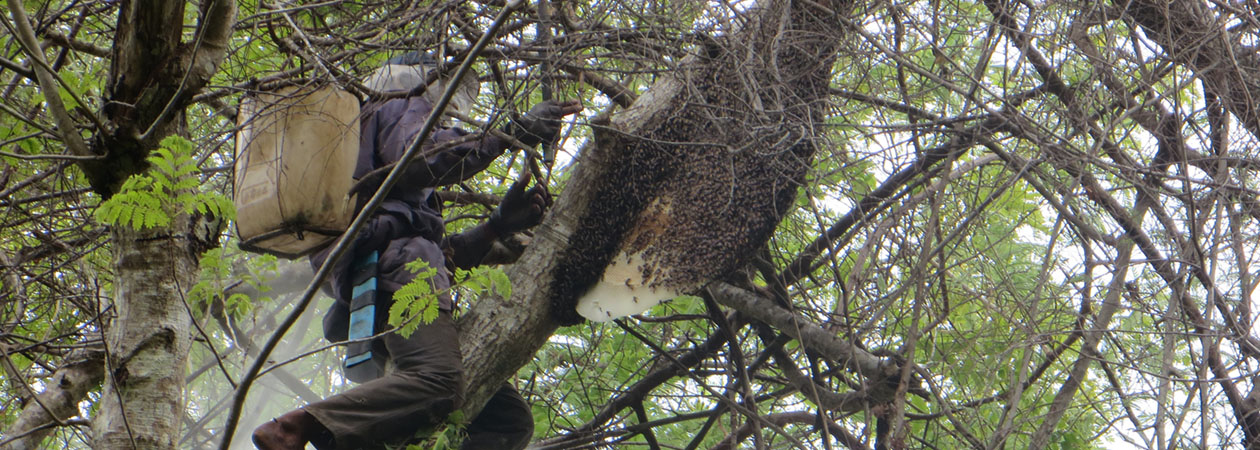Forest Harvest is a collective mark that aims to highlight the forest source and sustainability of products, starting from those coming from community partners of the Non-Timber Forest Products Exchange Program (NTFP-EP) network. It covers all non-timber forest products that are harvested from the forests, whether from the wild or already cultivated sources. The label guarantees that the products meet three parameters:
- Traceable Forest Source
Using Participatory Guarantee Systems (PGS) or other monitoring systems in place, products or the materials used can be traced back to well-managed community forest, whether wild or cultivated in home gardens of forest-based communities. - Sustainable
The product is harvested according to the agreed sustainable harvesting protocol for the product. - Good Quality
The product is produced according to market standards and meets existing product quality standards of the market, unless a different standard is agreed upon.
How does it work?
Products, mainly sustainably harvested non-timber forest products are enrolled to the Forest Harvest Collective Mark Program, which requires for them to have a set of standards agreed to by all partners. Members submit their products to be evaluated against the mark’s 3 main parameters and the specific product standards. The mark is only used on products that pass the evaluation.
Existing monitoring and guarantee systems can also be accredited to document and assess certain or all parameters and standards, to minimize costs and any potential burden on producers.
The collective mark is currently managed by the Non-Timber Forest Products -Exchange Program Asia. In time, a Forest Harvest Association will be established to own, manage and oversee the appropriate use and promotion of the collective mark. The membership association is open to forest-based community enterprises practicing sustainable harvesting techniques and private companies or marketing intermediaries that mainly process or distribute sustainable non-timber forest products sourced from partner communities.
Forest Harvest Pilot: Asian Forest Honey
In the Madhu Duniya, a gathering to discuss Asian forest honey last April 2015 in Cambodia, the concept of the Forest Harvest Collective Mark was presented to the partners of the NTFP-EP. The partners warmly welcomed the ideas of a collective mark and a pilot with forest honey.
Over eight months of exchange through email, Skype, and face to face meetings, the partners have come up with a draft Asian Forest Honey standards and protocols that shall be the basis of the use of the collective mark on forest honey.
For the pilot, a group from Sumbawa Island was chosen. Sumbawa Island is well known for its light, sweet honey among Indonesians and tourists. They have a Geographical Indication Mark to distinguish authentic Sumbawa honey from those who would like take advantage of the island’s renown. Having the Forest Harvest Mark on a well known and sought after product will hopefully help to raise awareness about the mark.
The community enterprise participating in the pilot is 3 Lembah. The pilot activity is still underway, expecting to have recommendations for improvement implemented in the next honey harvest season of 2016.
The NTFP-EP Network and Work on NTFPs
The Non-Timber Forest Products Exchange Programme Network works in the South and Southeast Asian region on sustainable livelihoods and community based resource management. Partners from Cambodia, India, Indonesia, Malaysia, Philippines and Vietnam have been supporting communities in developing products, and upgrading qualities. Honey, rattan, resins, natural fibers and textiles, forest food are just some of the products that they have developed and have brought to market.
It’s been a dream of the network to come up with a collective mark that will allow partners to differentiate their product that are sustainably sourced from natural forests from other natural products, as well as to cooperate in marketing efforts. The Forest Harvest Collective Mark is the start of the realization of this dream.
If you would like to learn more, contact us at info@ntfp.org. Visit our website at Forest Harvest CBNE Forum 2021
What is a Collective Mark?
A collective mark is a distinctive sign or sea/ that certifies that the products or services of members of a specific collective entity with legal personality, whether public or private, meet the standards and characteristics pre-established by the owner of the mark. The owner of the mark does not sell the products under this mark as a brand but instead the mark is used to advertise and promote the products or services of its members who sell their products and respective brands under the collective seal.
The members use the collective mark to identify themselves with a /eve/ of quality or a feature (e.g. geographical origin, material, mode of manufacture or other common characteristics of goods or services) distinct to the association. Collective marks can be used together with a member’s own brand, which allows individual companies or groups to differentiate their products while still benefiting from the confidence of the consumers that recognize and trust the collective mark. But membership in the association alone does not permit the use of the collective mark. Its use depends on their compliance to the defined standards of this quality or feature established by the association. Unlike trademarks, collective marks cannot be licensed to another party.

